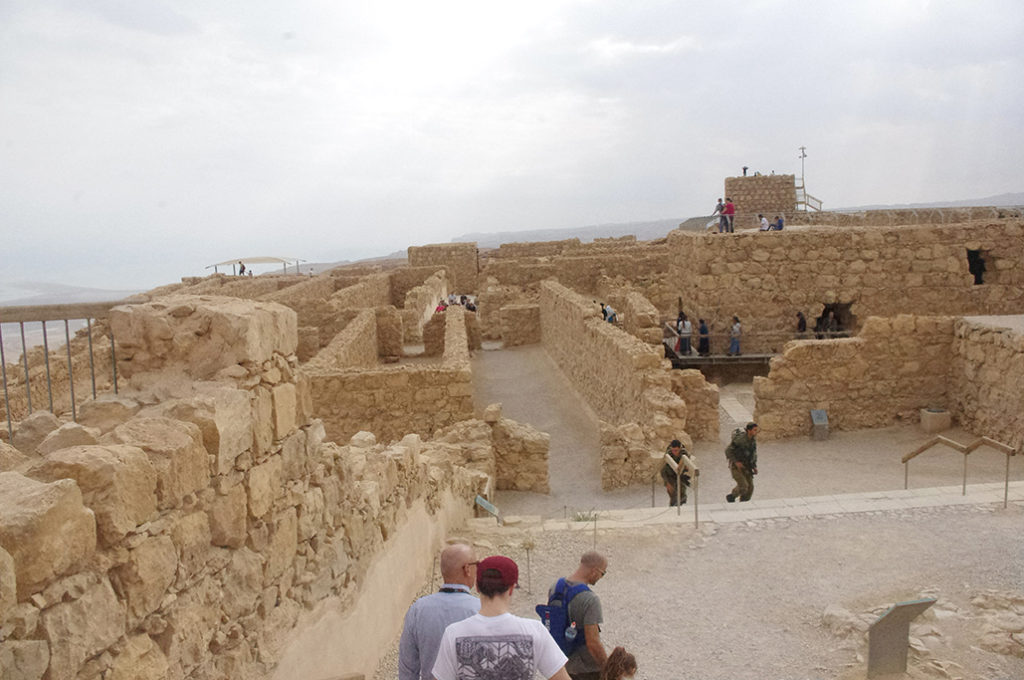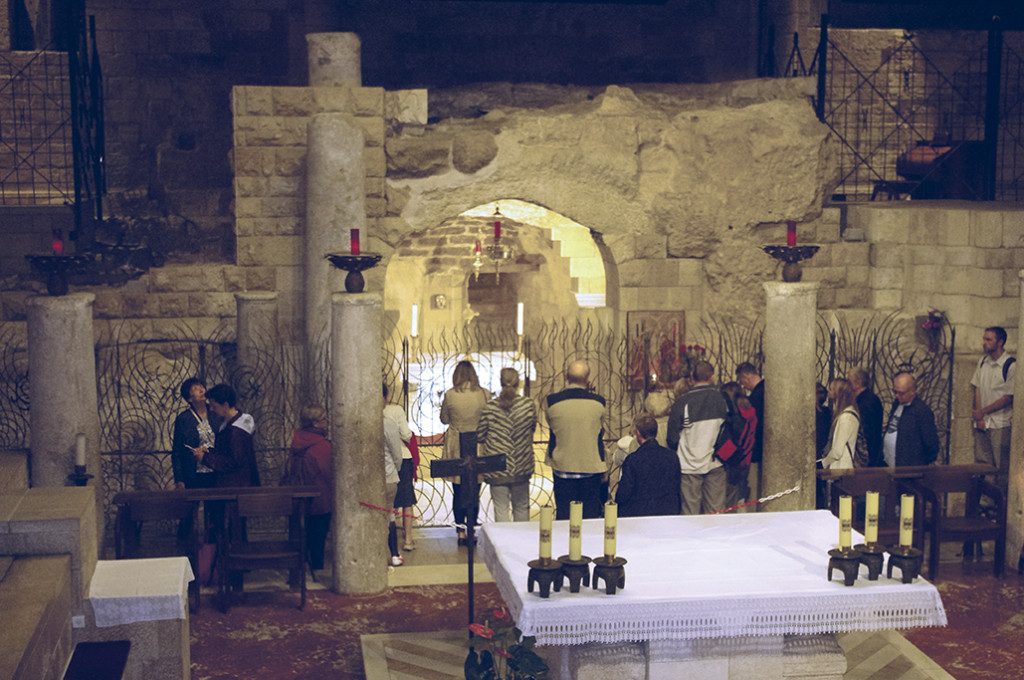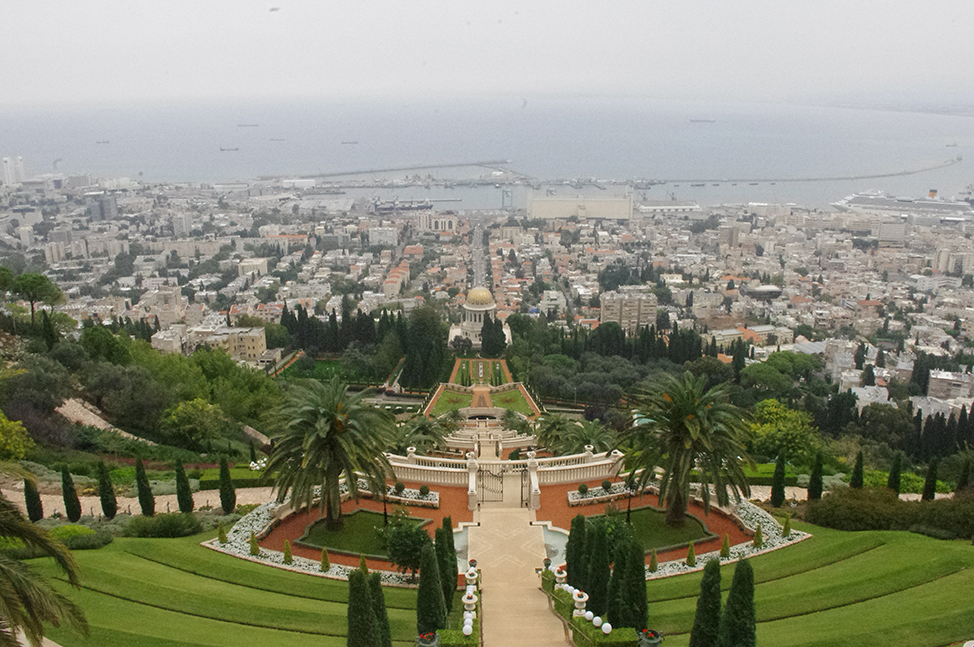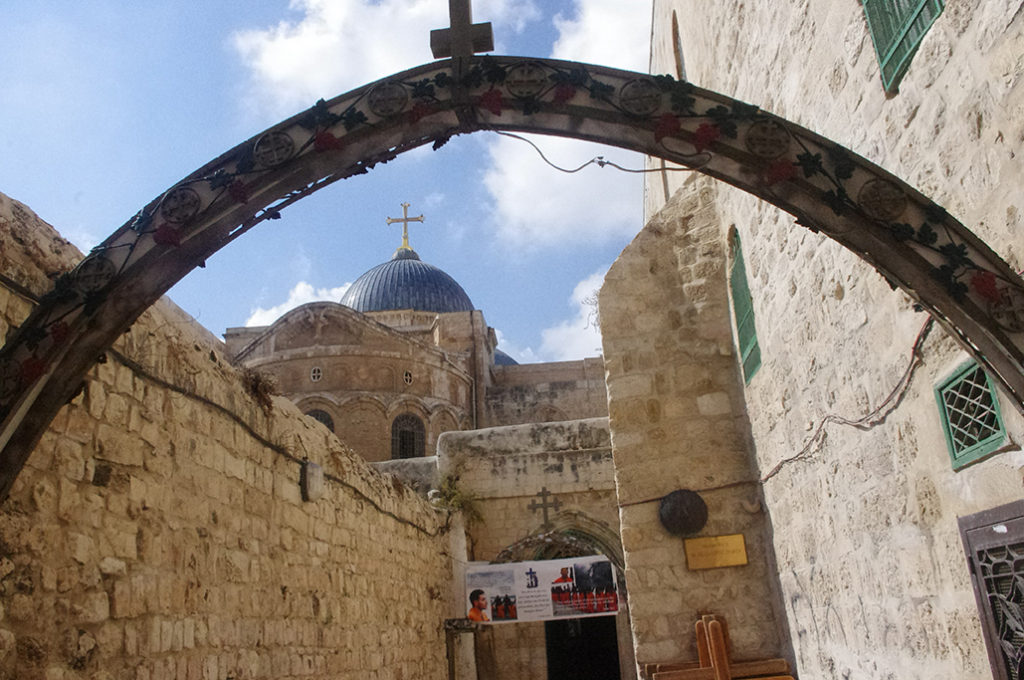

JERUSALEM — Tonight as I write these words, I’m about 6,000 miles away from the birthplace of Christianity, but just a few days ago, I was walking in the footsteps of Christ in the Holy Land.
[quote_box_center]
See Also
-
Tel Aviv and Jaffa blend ancient and modern world
-
The shore of Galilee to the town of Mary Magdalene
[/quote_box_center]
Wednesday, Nov. 4: The first thing you see when you step off the plane at Ben Gurion Airport in Tel Aviv is an eye-catching “Welcome to Israel” banner. That evening, I met three other journalists from around the U.S. who were also there to tell the story of the Holy Land to readers back home. As the Church draws near to Advent, there’s no better place to contemplate the early years of our faith.
Our guide, Ziv Cohen, took us to Jaffa, a small city near Tel Aviv. We stood outside the Church of St. Peter and he pulled out a well-worn Bible. “This is our guide book for the tour,” he said. Turning to Acts 9:36, Cohen pointed to the account of St. Peter in Joppa (known today as Jaffa) where he raised Tabitha from the dead.
“In those days, people didn’t have 9-1-1. They were looking for a healer,” Cohen said. “Someone spiritual.” He pointed out the placard on the door of St. Peter Church that indicated Mass is celebrated in English, Hebrew, Polish and Spanish. “Tel Aviv is the diplomatic capital of Israel and many diplomats and foreign workers attend Mass here,” Cohen said.

Thursday, Nov. 5: We traveled to Caesarea, the seaport city built by Herod near the Mediterranean where Cornelius and many other non-Jewish believers were baptized by St. Peter. Caesarea is also the spot where St. Paul was imprisoned.
From there, we headed to Nazareth, once the home of the Holy Family. The Basilica of the Annunciation is built over the site where the Angel Gabriel visited Mary. Sr. Beatrice Bourrat from the International Center Mary of Nazareth showed us the excavated site of the home of Jesus, Mary and Joseph built atop stone.
“There were some 40 homes here — some of Jesus’ neighbors lived here and He visited them,” Sr. Beatrice said. “When He spoke of a house built on stone, he was describing His home in Nazareth.”
Understanding Mary helps people understand Jesus, she said. To help accomplish that, the center offers three 30-minute films about Mary that both inspire and seek to further interreligious dialogue in Nazareth and beyond. “We’re a Catholic community with an ecumenical opening. We’ve been educated to pray for Christian unity,” Sr. Beatrice said.

Friday, Nov. 6: We visited Tabgha, where the miracle of the loaves and fishes took place. We also stood atop the Mount of Beatitudes where there’s an octagonal-shaped church that features a stained-glass window of each of the Beatitudes.
Near Haifa, we ascended Mount Carmel and entered the Stela Maris Monastery, established by the Carmelites over the cave in which the prophet Elijah is said to have lived. The Carmelites have been at Mount Carmel for 800 years. Inside the church, we watched as a Carmelite nun knelt down and began singing the Ave Maria. All around us, the walls held images of famous Carmelite saints such as St. John of the Cross, St. Teresa of Avila and St. Thérèse of Liseiux.
Then it was off to the peaceful shores of Galilee where we beheld an ancient boat found by two brothers some 30 years ago. Experts say it is 2,000 years old and is typical of the boats of the era. Standing inside the museum, not far from the gentle waves of Galilee, you can picture St. Peter and his companions fishing.
From there it was on to Capernaum where a church has been built over the site of St. Peter’s home. There’s a large opening in the floor, covered by glass that allows you to see inside the excavation. Next to the church, there’s an ancient synagogue.

Saturday, Nov. 7: By the time we got to Jerusalem, I found myself humming “Jerusalem My Destiny.” Never has that hymn seemed more appropriate. We walked the Via Dolorosa and watched as a 30-something woman approached the ancient Church of the Holy Sepulchre, revered as the site of Jesus’ crucifixion and burial. The doors are massive and the towering pillars impressive. The woman paused at the door and then kissed the stone pillar.
Although many of the places we visited in the Holy Land are ancient, we spent one afternoon at Domus Galilaeae where Michal Makavitch, a young seminarian from Poland, gave us a tour. Built in 2000 and dedicated by Pope St. John Paul II, it’s unlike anything else in the Holy Land. There’s a distinctive Frank-Lloyd Wright feel to it, with plenty of windows that invite the natural beauty of Galilee.
“Visitors come here every day,” Makavitch said. “We have people coming here discerning vocations. It’s a place where you can experience that God loves us.”
From the excavations of first-century homes in Nazareth to the modern setting of Domus Galilaeae, a visit to the Holy Land brings the Gospel alive and bridges the past with the present. “God is real,” Makavitch told us. With the evidence of that everywhere we turned, it was easy to believe.





